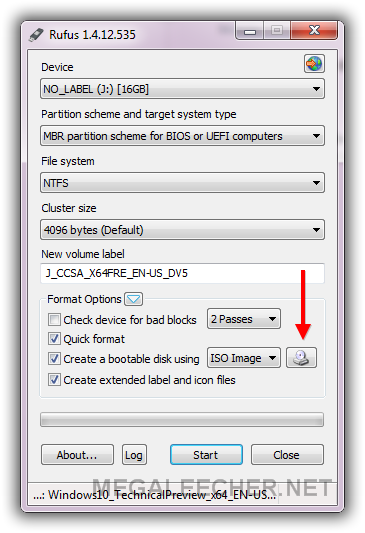

- MICROSOFT USB IMAGE TOOL INSTALL
- MICROSOFT USB IMAGE TOOL SOFTWARE
- MICROSOFT USB IMAGE TOOL ISO
- MICROSOFT USB IMAGE TOOL FREE
It's an extra feature that ISO 9660 allows if done carefully.

So, in summary, there's nothing to say that an ISO image should be bootable on a USB disk. A Hybrid ISO actually has two different boot loaders, one as part of ISO 9660 El Torito Boot and one for traditional disk boot. This leaves plenty of room to hide an MBR or GPT label in there with a conventional disk bootloader.
MICROSOFT USB IMAGE TOOL SOFTWARE
Software reading the disc as ISO 9660 will always skip past that section. It make no claims at all what can go there and will ignore whatever is there. The ISO 9660 file system has an interesting feature, it declares the first 32 kilobytes as a system area for someone else to use. What many Linux distributions use is a technique called Hybrid ISO. This means an ISO for boot must be set up completely differently from a USB drive. When the BIOS or UEFI on a computer tried to boot from a CD-ROM, it uses that and does not look for an MBR or GPT.

The standard is call El Torito Boot and describes a structure that resides inside a ISO 9660 file system. To boot a CD-ROM, it's a much different process. The GPT itself is located in the first few kilobytes of the disk. GPT is a little different and allocates something called an EFI partition elsewhere on the disk. With the MBR, the bootloader is kept with the MBR in the very first 512-byte sector on the disk. The BIOS in your computer will read the MBR or GPT from disk media and look for a boot loader there. Larger disks now use GPT, but it's similar for this discussion. Other disk-style media (including anything USB), on the other hand, start with a Master Boot Record or MBR. It is that a CD-ROM or DVD will be formatted with a file system called ISO 9660 (or a newer file system called UDF). First of all, CD-ROMs and DVDs are read by a computer differently than all other disk media. The current version of ImageUSB is v (2449 KB).I believe this has been answered, but I wanted to add a more detailed description of what is happening. In this scenario, users will need to reformat the UFD in order to access the rest of the storage space. For example, if a 2GB image is copied to an 8GB USB Flash Drive, the drive will only be able to use two out of the eight gigabytes of storage space. Warning: Due to the forensic nature of image duplication by ImageUSB, please ensure that you select UFDs with a storage size similar to the image you wish to duplicate. As of V1.5, imageUSB now supports extraction of ISO contents onto USB Drive. A reformat can recover the drive however. So the direct imaging of ISO9660, Joliet or UDF file system, from a CD, to a USB drive, might not allow the USB drive to function in all operating systems. (*) CD ISO images use a different file systems compared to USB drives. In addition, imageUSB has the ability to reformat even hard to format drives and reclaim any disk space that may be lost previously. Or alternatively to just Zero the MBR and/or GPT entries that exists on the drive. This will replace the contents of the entire drive with 0s. ImageUSB includes functionality to Zero a USB Flash Drive. ImageUSB can perform flawless mass duplications of all UFD images, including bootable UFDs. Unlike other USB duplication tools, ImageUSB can preserve all unused and slack space during the cloning process, including the Master Boot Record (MBR).
MICROSOFT USB IMAGE TOOL INSTALL
ImageUSB can also be used to install OSFClone to a USB Drive for use with PassMark OSForensics™. ImageUSB also supports writing of an ISO file byte by byte directly to an USB drive (*). Capable of creating exact bit-level copies of USB Flash Drive (UFDs), ImageUSB is an extremely effective tool for the mass duplication of UFDs.
MICROSOFT USB IMAGE TOOL FREE
ImageUSB is a free utility which lets you write an image concurrently to multiple USB Flash Drives.


 0 kommentar(er)
0 kommentar(er)
